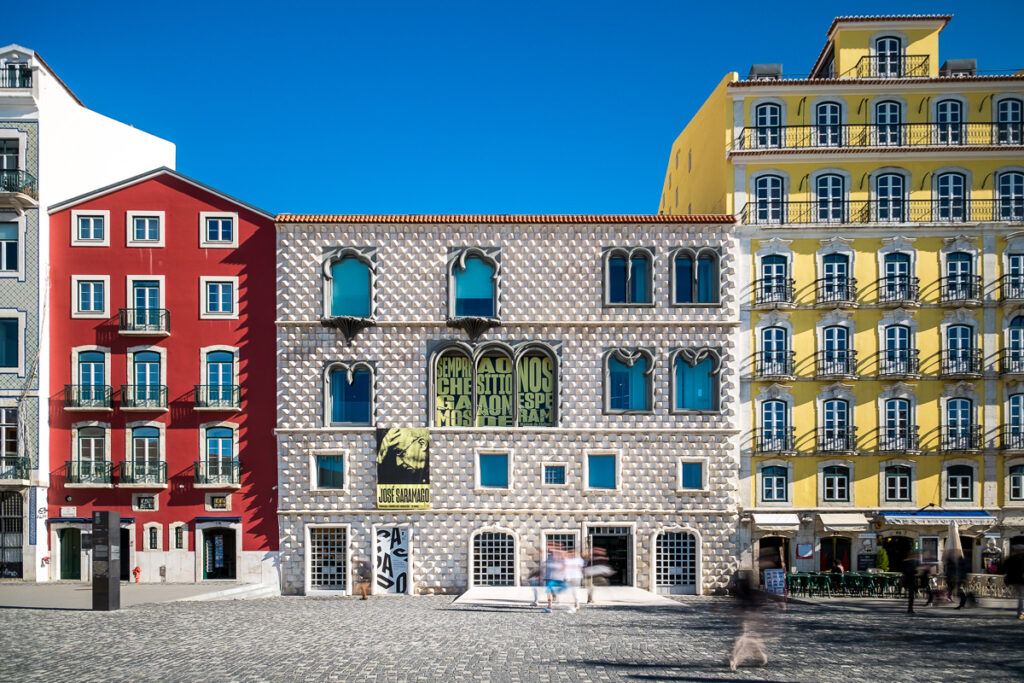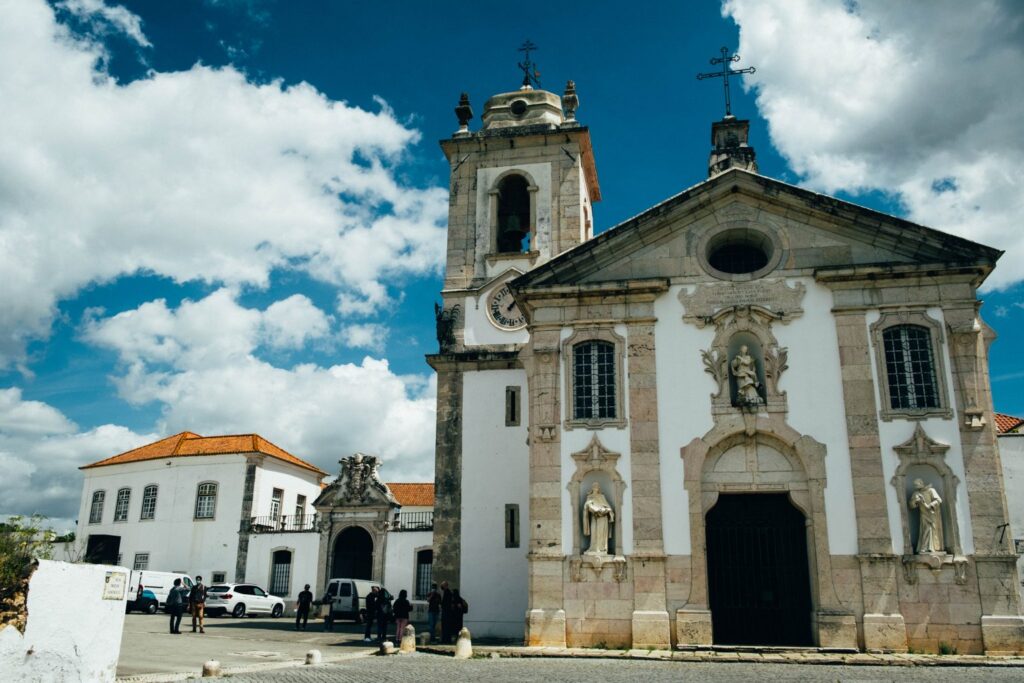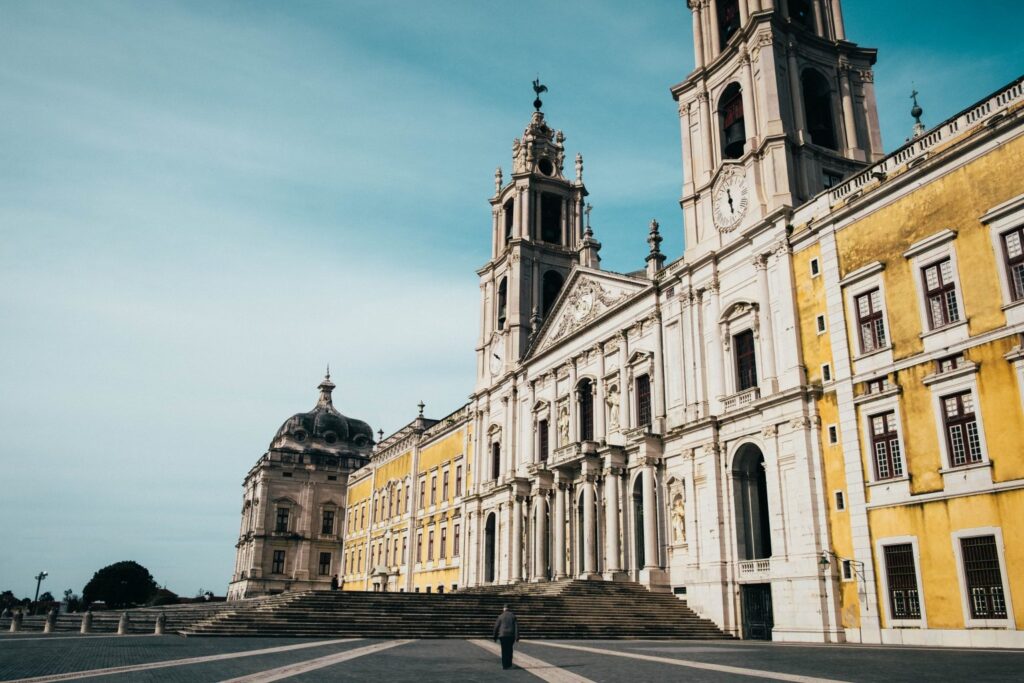The literary work of José Saramago Memorial do Convento gives rise to a cultural route that can be taken over three municipalities: Lisbon, Loures and Mafra. The defined route traces a line that goes from Casa dos Bicos (headquarters of the José Saramago Foundation) to the Mafra Palace and that can be done in its entirety (58 kilometers) or in parts.
The project, which resulted from a partnership between the City Councils of Lisbon, Loures and Mafra, is promoted from this month by the José Saramago Foundation which, on dates to be announced, will promote guided tours and staged readings, among other initiatives. The Memorial Route of the Convent, a tribute to José Saramago, follows the text of the book and reveals historic and scenic monuments from the 18th century, between Lisbon and Mafra, passing through Loures, as well as points of heritage interest located in Sacavém, Santo António dos Cavaleiros , Unhos, Santo Antão do Tojal, Fanhões, Malveira, Mafra (convent and old town) and Cheleiros.

Lisbon
Point 1 – Casa dos Bicos | José Saramago Foundation
The Casa dos Bicos, whose construction is attributed to Francisco de Arruda, stood out from the rest of the noble houses in the area due to its original south facade. It was probably built in 1522, by order of Braz de Albuquerque, a courtly nobleman protected from D. Manuel I and son of Afonso de Albuquerque. In Saramago’s book it is referred to as the “Casa dos Diamantes”.
Point 2 – Terreiro do Paço (current Praça do Comércio)
The fernandine wall that ran along the banks of the Tagus disappears, giving way to a large square, Terreiro do Paço, which turned out to be a determining urban element in the image of Lisbon. In the literary work it is the starting point of one of the most emblematic stories: that of Father Bartolomeu de Gusmão and the invention of the flying machine.

Loures
Point 3 – River Trancão Viewpoint
River port that, according to the Parish Memories, in the century. XVIII, had two urban centers: Sacavém de Cima and Sacavém de Baixo. In 1759 there were three wharves: Nossa Senhora, Barca and Peixe, attesting to the local economic dynamism. In 1730 the Esteiro da Princesa was opened, between Lisbon and Santo Antão, allowing the transport of Italian bells and statues to the Convent of Mafra.
Point 4 – Church of São Silvestre
Temple with a single nave, with a 17th century façade and a bell tower, whose existence dates back to the 19th century. XIII. Inside, gilt carved altars from the 19th century stand out. XVIII, image of Pietá from the end of the 17th century and 16th century panels with scenes from the life of São Silvestre, attributed to Mestre de São Quintino.
Point 5 – Municipal Museum of Loures
The Museum, installed in the former Franciscan Convent Arrábido do Espírito Santo da Mealhada, built in 1574, has the mission of studying, safeguarding and disseminating local history and heritage. In the former sacristy you can visit the Interpretation Center of the Convent Memorial Route.
Point 6 – Monumental Square of Santo Antão do Tojal
Large apparatus square, built and remodeled in the 19th century. XVIII with the signature of the Italian architect António Canevari. The space reveals a monumental baroque ensemble composed of the Archbishops’ Palace, Mother Church, Fountain-palace and Aqueduct. In the book, Baltasar departs from Santo Antão do Tojal, leading a team of oxen with materials for the construction of the Mafra Convent.
Point 7 – Archbishops Palace
Palace of residential and religious architecture, baroque. Inside, there are magnificent 18th century tile panels. It was the summer residence of D. Tomás de Almeida (first patriarch of Lisbon) who at the palace received several visits from the King, when he traveled to Mafra to accompany the Real Obra.
Point 8 – Church of São Saturnino
Temple dating from 1575 and which was built at the request of the population who, on wintry days, with a lot of rain, found it difficult to travel to Santo Antão do Tojal. Highlighting the interior for the Johannine choir, the baptismal font and the painting of São Saturnino attributed to Pedro Alexandrino de Carvalho. The Church was restored in 1796, after the Lisbon Earthquake.

Mafra
Point 9 – Largo da Feira in Malveira
The Malveira Market, still today one of the most emblematic in the so-called Saloia region, was established after the grant of the annual fair by D. Maria I, in 1782. It was intended to supply livestock for consumption in Lisbon and the suburbs. The livestock trade was joined by the sale of the most diverse products related to agriculture, livestock, fishing, textiles and footwear.
Point 10 – Church of São Miguel de Alcainça
The oldest document relating to the church dates from 1270. The current temple, the target of several architectural interventions in the 14th, 17th and 19th centuries, includes the chancel that houses a large carved altarpiece and a coffered ceiling, which was associated with a new facade and the bell tower.
Point 11 – Mafra National Palace
One of the most imposing and notable monuments in Portugal and Europe, the Real Edifício de Mafra includes a Palace, a Basilica, a Convent with its fence (currently Jardim do Cerco) and a Tapada. It was classified as a National Monument and, by UNESCO, as a World Heritage Site. The book describes the eight days of transportation of the Benedictione stone, which tops the portico of the Basilica, in the Blessing Gallery.
Point 12 – Church of Santo André de Mafra
An excellent example of Gothic parish, the Church of Santo André, built between the 13th and 14th centuries, houses the tombs of the Mafra grantees, D. Diogo Afonso de Sousa and D. Violante Lopes Pacheco. The monument, restored in the 20th century by the Directorate-General for National Buildings and Monuments, was classified as a National Monument in 1935.
Point 13 – Church of Cheleiros and Cruzeiro
Referred to in the reign of D. Afonso II (13th century), the church was the subject of several construction campaigns. The main transformation took place in Manueline times, with the construction of a new chancel that displays the armillary sphere (emblem of D. Manuel I) and the arms of the donataries. The incorporation of various Roman and Paleo-Christian materials suggests the existence of a Roman villa in the area.
@ Agenda Cultural de Lisboa


